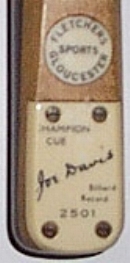
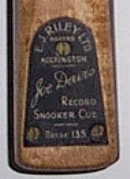
There are so many Variants of the Joe Davis cue that I could create a whole web site about them. Having said that I will try to give you a flavour of what to look out for.
Joe was such an entrepreneur that he never ceased to take every opportunity to promote the game of Snooker and of course himself. Both E J Riley and Peradon Limited produced cues that bore his name. The Riley cues always had a tombstone or bell shaped badge, either cream in colour or on occasion, black. The Peradon versions always had a rectangular badge.
It was customary for a player to have a “Champion Cue” carrying his name made once he had won the world Billiards championship in the late 19th and early 20th century and after about 1940 the same tradition was applied to the world Snooker championships. These cues are known as “Champion Cues”. Other cues were made to commemorate high breaks and world record breaks, sometimes these cues were made to commemorate the highest break of a particular player even if they were not the current world record.
Joe Davis made a high break at Billiards of 2.501 in 1927, so naturally all cues that bear this mark were made after this date. Incidentally Joe Davis made a Snooker break of 100 in the championship of 1928, the two breaks often appear together on some cues.
Joe also recorded record Snooker breaks right up to 1955 when he made a 147, this break was not in the world championship as he had retired from competing in the event after 20 tears of domination. His breaks and dates that they were made are as follows;
| Break | Year |
| 105 | 1930 |
| 114 | 1933 |
| 135 | 1946 |
| 146 | 1950 |
| 147 | 1955 |

Incidentally, the first ever total clearance was achieved by Sidney Smith in the year 1936, his break was 133 and appears in the badge of the Gold Cup Snooker cue that also bears his name.
As you can no doubt imagine the early days of Snooker coincided with the demise of Billiards as a major box office commodity. This meant that making the most of any Snooker related publicity was a must. Prolific break builders like Joe Davis, Horace Lindrum and Sidney Smith would make the papers if they could make a record break, particularly if they made it in the world championships.
It is a little known fact, today that from 1936 until 1947, Snooker’s high break record was held by Horace Lindrum with a total clearance of 141. From what I have gathered Horace would have held other high break records if he had been familiar with how to register his achievements, at any rate his 141 still stood for many years until Walter Donaldson made a 142 in 1946 to eclipse it by a solitary point.
Returning to Joe Davis for a while, the cues that bear his name often appear in ash, maple and hornbeam for the shafts with an ebony butt of either machine or hand spliced configuration, with either a maple or birds eye maple facing splice.
Exceptions to this design include the 500 and 600 century break cues and the pre 100 Snooker break cues which either had a facing splice with ebony with maple lines or were simply, black butted cues..
I myself have a Joe Davis special Snooker cue from 1946 which is signed on the shaft by both Joe and Fred Davis, their signature is dated too, this cue is machine-spliced and yet, I would think that it is worth quite a sum of money.
Some people think that the Joe Davis cues that bear additional round badges are cues made by other manufacturers, such as Hixon, Raper or Alec Watson. The truth is that these cues were all made by Peradon Limited on behalf of these other companies and then sold through their own individual outlets. From my point of view they are worth about the same as the standard cues.
Some of the Riley versions are very pleasing indeed and often make excellent cues to use, they usually fetch a higher price than the Peradon version, this is, I believe, because people think that they were made in fewer numbers. I tend to doubt this, I favour the theory that states that as more of them were playable for Snooker they were more likely to have been used and abused by their owners over the years. Only time and research will reveal the true answer.
Many collectors start out by collecting Joe Davis cues on their own. I myself prefer to try to put together cues that commemorate the achievements of all the great players of the late 19th and early 20th centuries. Which ever you prefer, I feel sure that there is plenty of opportunity left to gather substantial collections in either field of interest.
Good hunting
David Smith
Joe Davis Cue Images
-

20 Years World Champion Joe Davis cue
-

Daily Mirror Joe Davis Prize cue
-

Joe Davis 20 Years World Champion cue
-

Joe Davis 600 picture cue
-
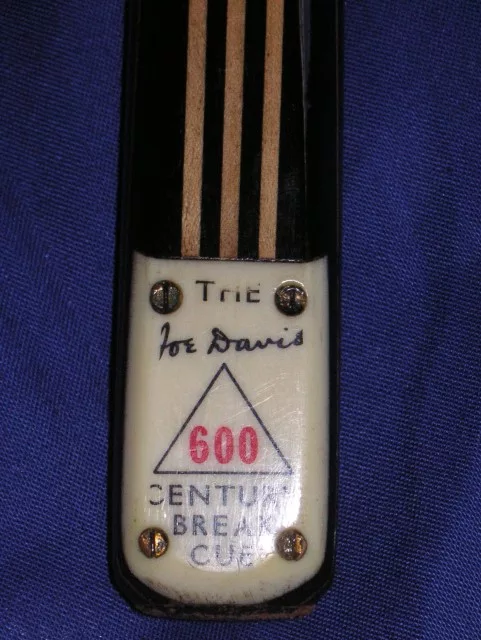
Joe Davis 600 Break cue
-

Joe Davis 500 Break cue
-
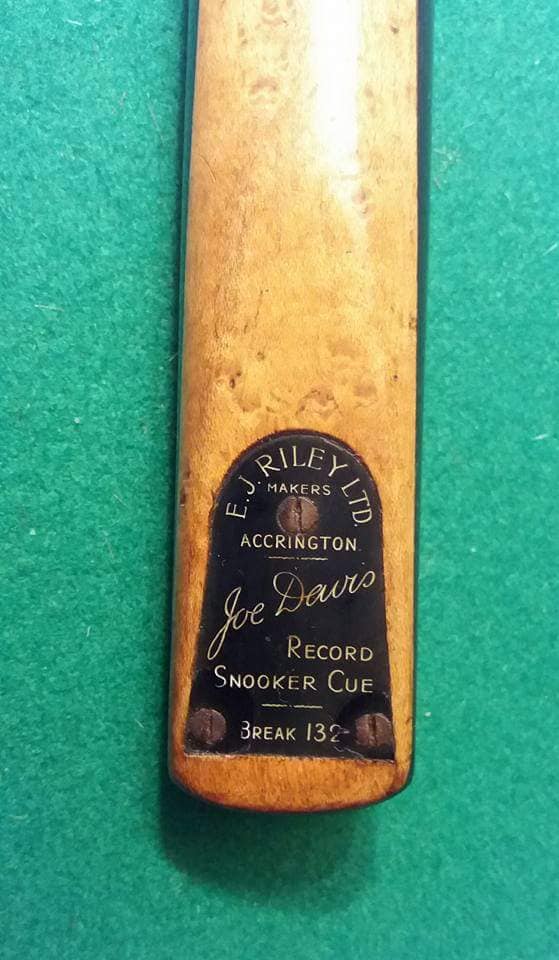
Joe Davis Record 132 cue
-

Joe Davis Champion 135 cue
-

Joe Davis Champion 114 cue
-

Joe Davis Champion 109 cue
-
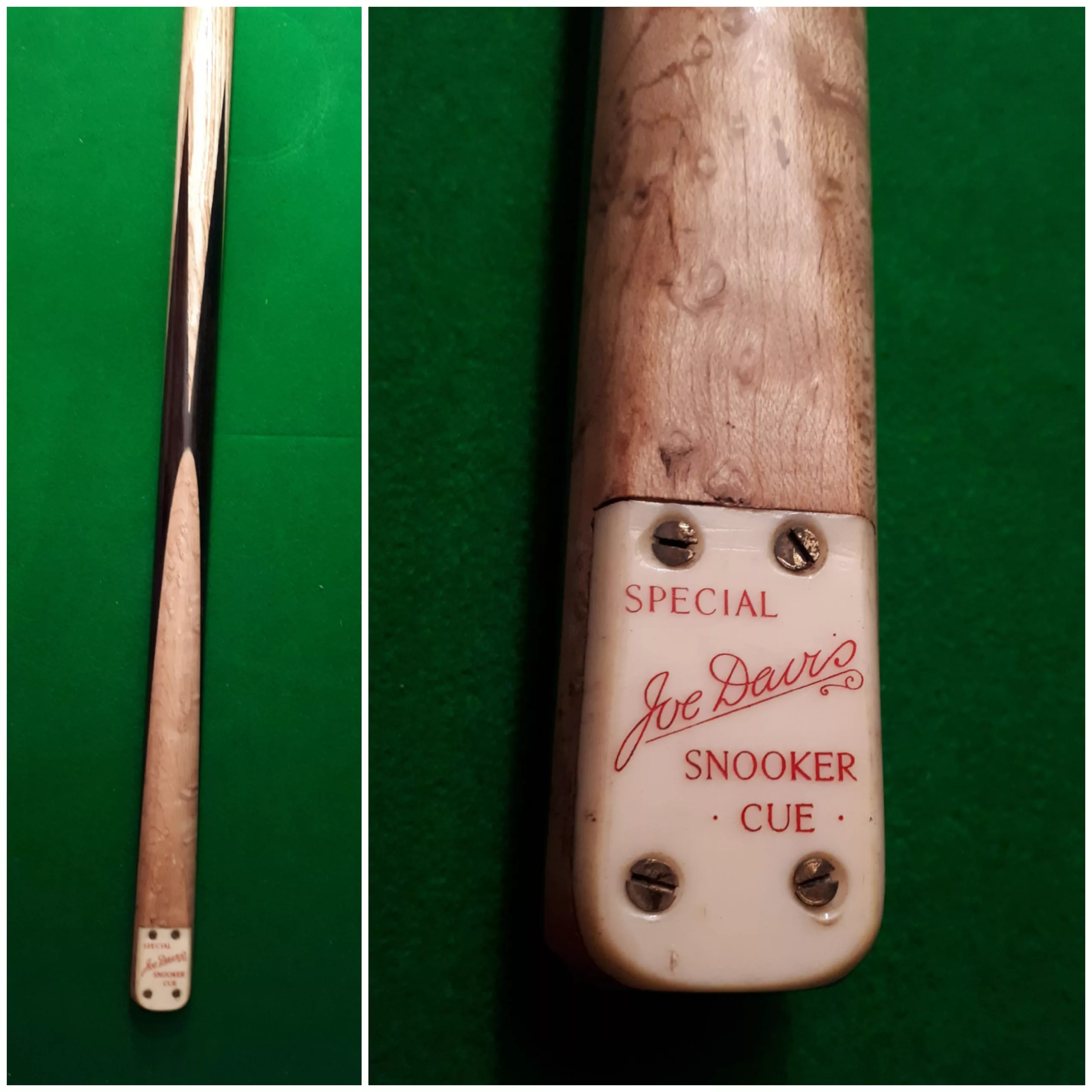
Joe Davis Special cue
-

Joe Davis Record 138 cue
-

Joe Davis Champion 147 cue
-

Joe Davis Champion 146 cue
-
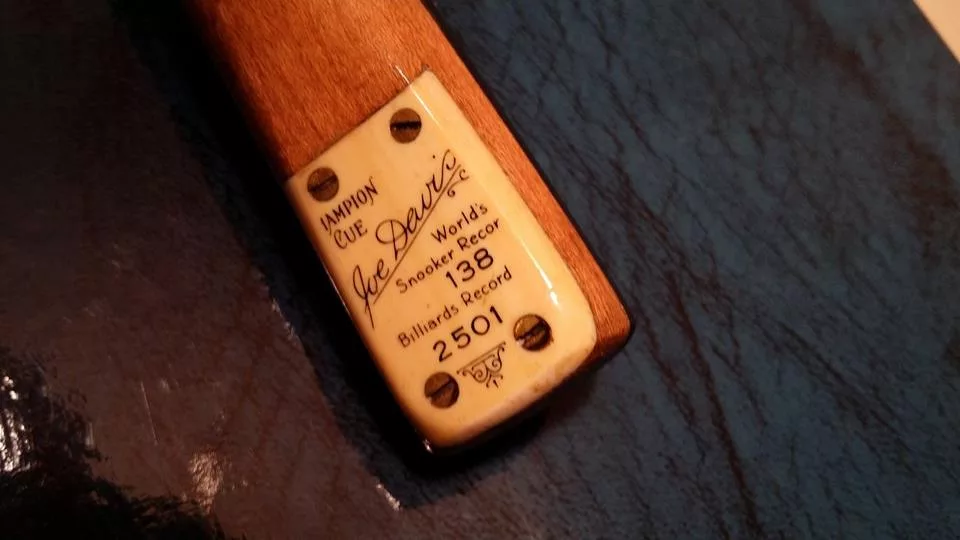
Joe Davis Champion 138 cue
-
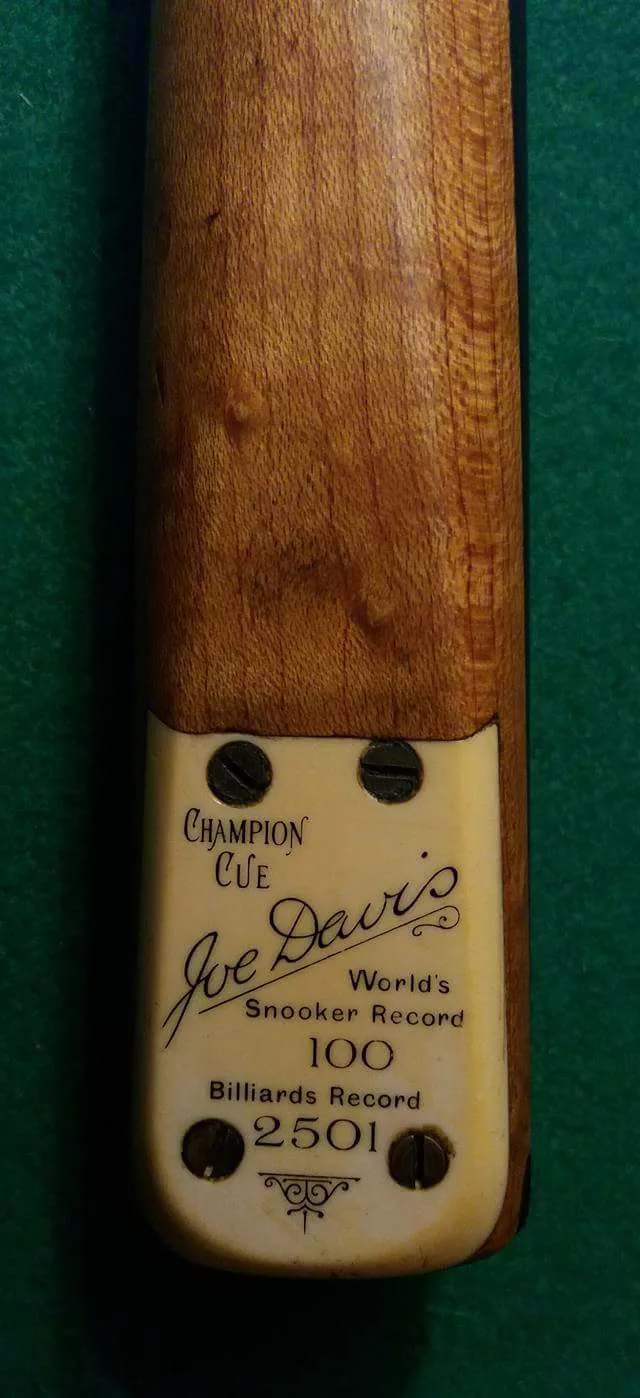
Joe Davis Champion 100 2501 Record cue
-

Joe Davis Champion 2501 Record cue
-
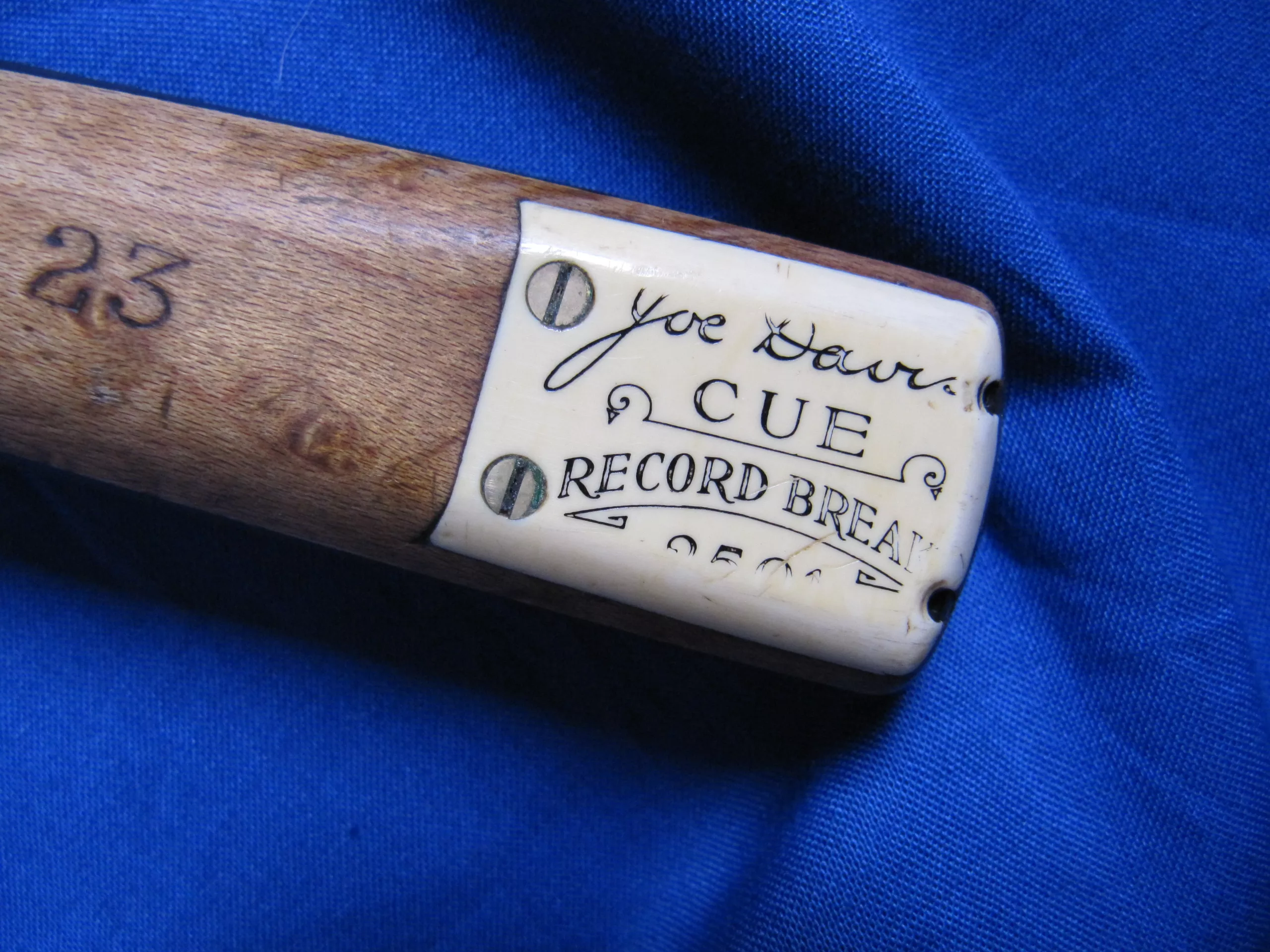
Joe Davis Record Break 2501 cue
-

Riley Joe Davis Record cues




